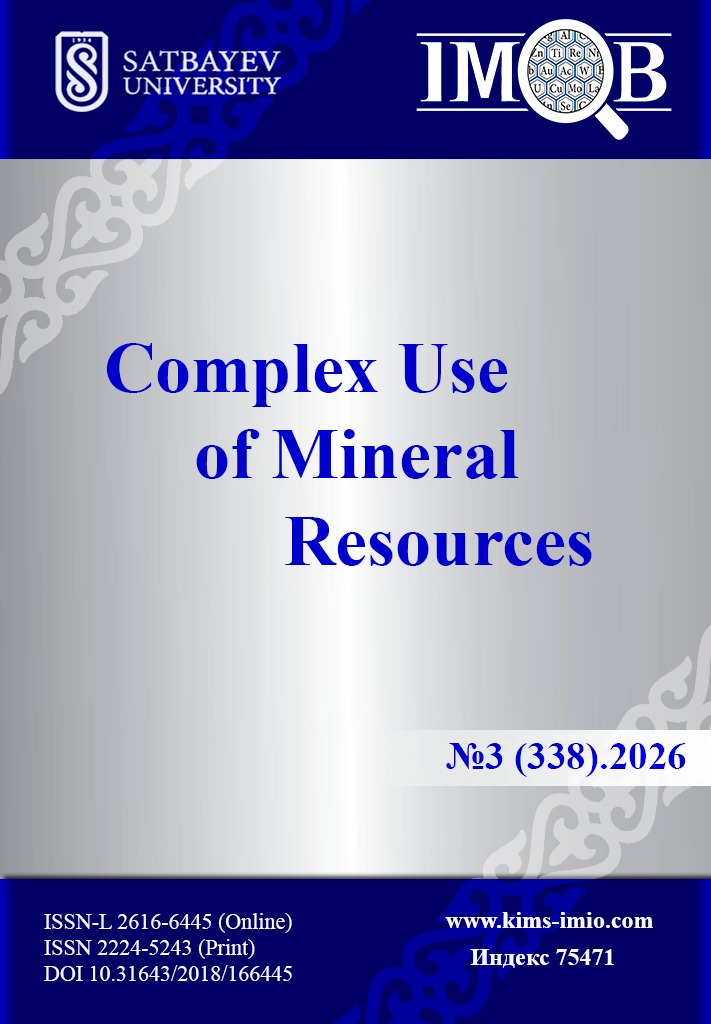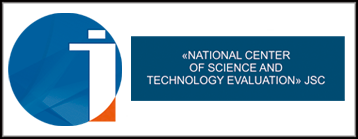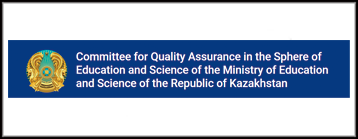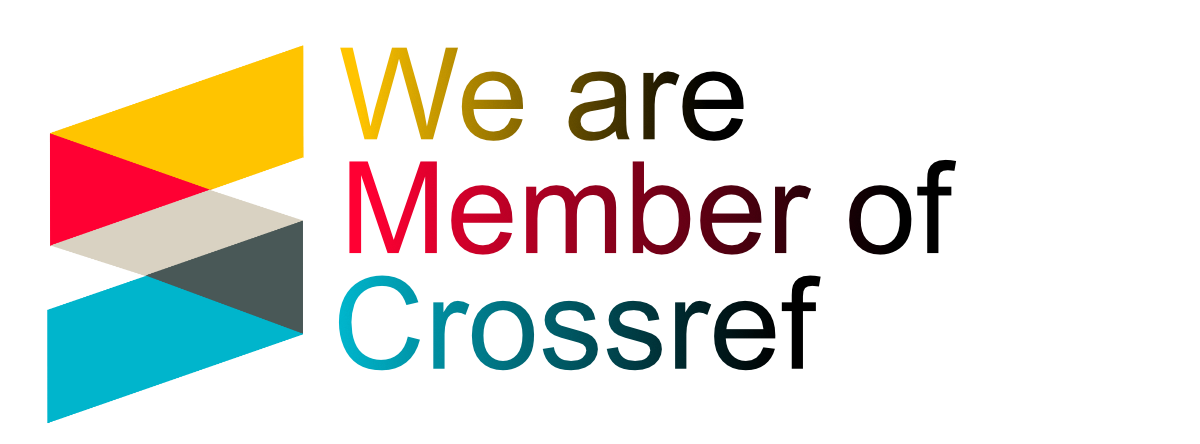Utilization of Natural Silicate Rocks to Reduce the Carbon Footprint in the Cement Industry
DOI:
https://doi.org/10.31643/2026/6445.27Keywords:
Pozzolanic activity, hydration process, calcium hydroxide (Ca(OH)₂), physicochemical properties, X-ray diffraction (XRD), differential thermal analysis (DSC).Abstract
Portland cement production is associated with high energy consumption and CO₂ emissions, highlighting the need for alternative raw materials to improve environmental sustainability. Research findings indicate that porphyrite, a natural silicate rock, exhibits pozzolanic and hydraulic activity, making it a promising additive in composite cement production. In this study, the physicochemical properties and hydration processes of porphyrite-modified Portland cement were analyzed using X-ray diffraction (XRD), differential thermal analysis (DSC), and Fourier-transform infrared spectroscopy (FTIR). The compressive strength and setting time of cement samples were tested according to GOST 30744-2001 and GOST 310-91 standards. The results showed that porphyrite addition slightly slowed the hydration process, reducing C₃S content while promoting the formation of calcium hydroxide (Ca(OH)₂). Cement containing 20% porphyrite met the 32.5N strength class requirements and demonstrated stable mechanical properties. Water absorption tests confirmed a gradual hydration process, with no sudden crystallohydrate formation observed. This study confirms that porphyrite is an effective mineral additive, contributing to cement durability, reduced clinker consumption, and lower energy demand. Future research should focus on the long-term stability of porphyrite-based cement using advanced thermal analysis techniques.
Downloads
References
Gartner E. Industrially interesting approaches to low-CO₂ cements. Cement and Concrete Research. 2011; 41(7):736-749. https://doi.org/10.1016/j.cemconres.2011.03.019
Licht S. Co-production of cement and carbon nanotubes with a carbon negative footprint. Journal of CO₂ Utilization. 2017; 18:378-389. https://doi.org/10.1016/j.jcou.2017.02.011
Mohammad M, & Ehsani M. A quantitative investigation of CO₂ sequestration by mineral carbonation. Physics-Geophysics. 2015. https://doi.org/10.48550/arXiv.1512.05189
Scrivener KL. Options for the future of cement." Indian Concrete Journal. 2018; 92(7):11-21.
Juenger MCG, & Siddique R. Recent advances in understanding the role of supplementary cementitious materials in concrete. Cement and Concrete Research. 2010; 41(12):1232-1243. https://doi.org/10.1016/j.cemconres.2010.09.011
Mehta PK. Reducing the environmental impact of concrete. Concrete International. 2001; 23(10):61-66.
Snellings R, Mertens G, & Elsen J. Supplementary cementitious materials." Reviews in Mineralogy and Geochemistry. 2012; 74(1):211-278. https://doi.org/10.2138/rmg.2012.74.6
Shi C, & Qian J. High performance cementing materials from industrial slags—a review. Resources, Conservation and Recycling. 2000; 29(3):195-207. https://doi.org/10.1016/S0921-3449(99)00060-9
Gartner E, & Hirao H. A review of alternative approaches to the reduction of CO₂ emissions associated with the manufacture of the binder phase in concrete. Cement and Concrete Research. 2015; 78:126-142. https://doi.org/10.1016/j.cemconres.2015.04.012
Juenger MCG, Snellings R, & Bernal SA. Supplementary cementitious materials: New sources, characterization, and performance insights. Cement and Concrete Research. 2019; 122:257-273. https://doi.org/10.1016/j.cemconres.2019.05.008
Scrivener K L, John VM, & Gartner EM. Eco-efficient cements: Potential economically viable solutions for a low-CO₂ cement-based materials industry. United Nations Environment Program Report. 2018.
Dhandapani Y, Santhanam M, & Gettu R. Performance of blended cements with supplementary cementitious materials: A review. Construction and Building Materials. 2021; 293:123524. https://doi.org/10.1016/j.conbuildmat.2021.123524
Wang L, Wang D, Zhang Y, & Gao Y. Hydration and strength evolution of Portland cement blended with chemically modified mineral additives. Construction and Building Materials. 2018; 171:531-539. https://doi.org/10.1016/j.conbuildmat.2018.03.170
Smith J, & Brown R. Pozzolanic properties of natural silicate rocks in cement production. Construction Materials Journal. 2021.
Yang Y, Lepech MD, Yang EH, & Li VC. Autogenous healing of engineered cementitious composites under wet–dry cycles. Cement and Concrete Research. 2009; 39(5):382-390. https://doi.org/10.1016/j.cemconres.2009.01.013
Li VC, & Herbert E. Robust Self-Healing Concrete for Sustainable Infrastructure. Journal of Advanced Concrete Technology. 2012; 10(6):207-218. https://doi.org/10.3151/jact.10.207
Ataíde A, & Liborio J B L. Use of volcanic rock powder in concrete as a partial substitute of cement. Construction and Building Materials. 2016; 121:1-8. https://doi.org/10.1016/j.conbuildmat.2016.05.146
Kramar S, & Mladenovič A. The influence of natural pozzolan addition on the properties of lime–cement pastes. Construction and Building Materials. 2013; 47:354-361. https://doi.org/10.1016/j.conbuildmat.2013.05.066
Massazza F. Pozzolana and Pozzolanic Cements. In: P. Hewlett, Ed., Lea’s Chemistry of Cement and Concrete, Arnold, London. 1998, 471-631.
Habert G, d'Espinose de Lacaillerie J B, & Roussel N. An environmental evaluation of geopolymer based concrete production: reviewing current research trends. Journal of Cleaner Production. 2011; 19(11):1229-1238. https://doi.org/10.1016/j.jclepro.2011.03.01
Müller CJ, & Harnisch J. A blueprint for a climate friendly cement industry. Cement and Concrete Research. 2008; 38(5): 712-715. https://doi.org/10.1016/j.cemconres.2008.02.002
Damtoft JS, Lukasik J, Herfort D, Sorrentino D, & Gartner EM. Sustainable development and climate change initiatives. Cement and Concrete Research. 2008; 38(2):115-127. https://doi.org/10.1016/j.cemconres.2007.09.008Scrivener
Scrivener KL, & Gartner E. Eco-friendly cementitious materials: Challenges and opportunities. Cement and Concrete Research. 2018.
Turayev X X, Mukimov AS, Tojiyev PJ, & Karimov MU. Physical and chemical properties of micro-silica cement composite. Uzbekistan Chemistry Journal. 2023; (4):20-30.
Adilhodzhaev AI, Shipacheva E, Shaumarov S, & Umarov K. On the method of assessing the structure of cellular concretes. Railway Transport: Current Tasks and Innovations. 2019; 1(3):18-26.
Downloads
Published
How to Cite
Issue
Section
License
Copyright (c) 2025 M.I. Iskandarova, F.B. Atabaev, A.Sh. Khadzhiev

This work is licensed under a Creative Commons Attribution 4.0 International License.


























